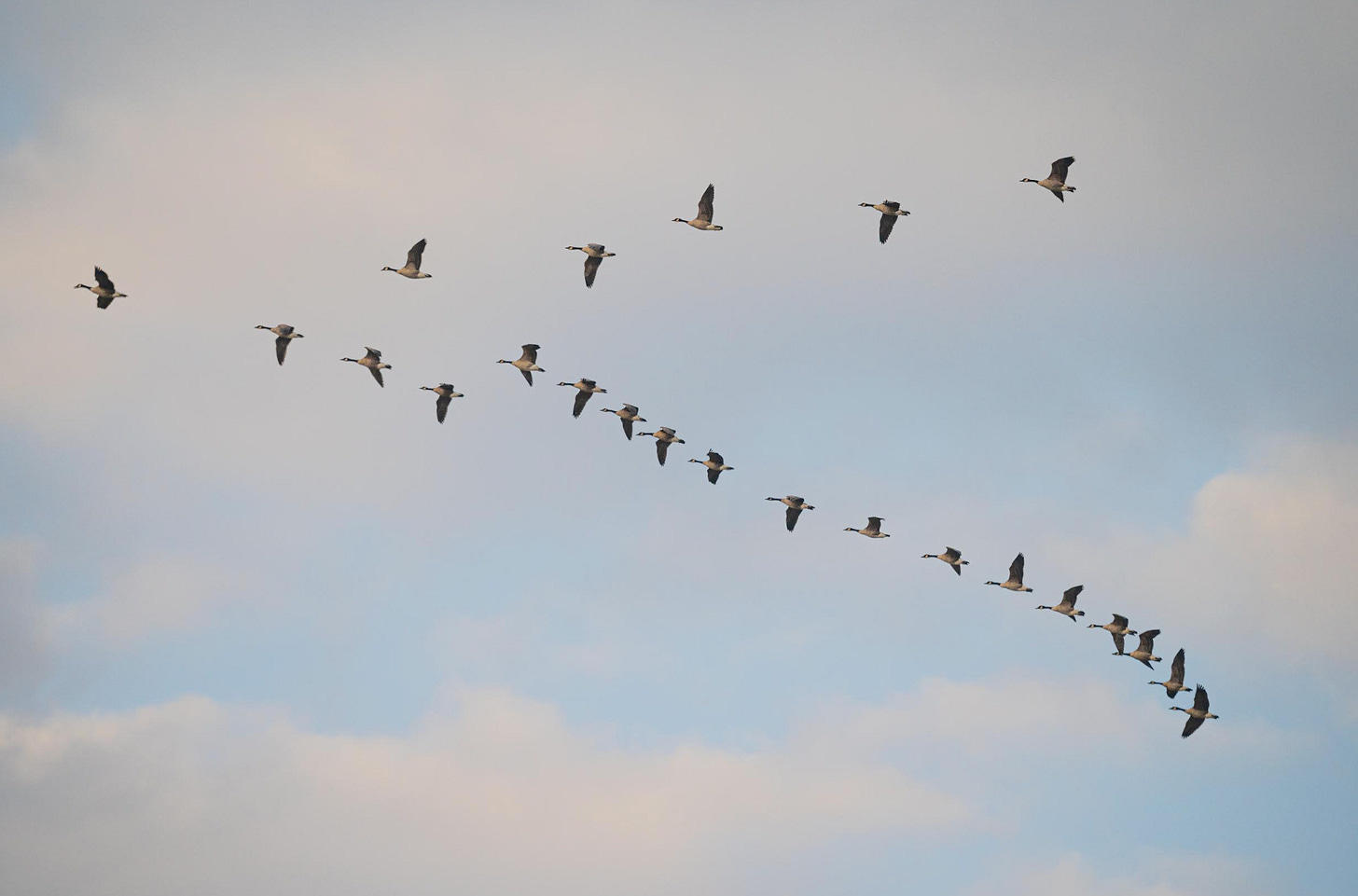Why Vermont Has Two Canada Goose Hunting Seasons
In the early 1900s, captive-bred geese were released to rebuild flocks and then settled year-round in places like Vermont parks, golf courses, farms, (and possibly some in their parents' basements).
Vermont’s first Canada goose hunting season opens September 1 and runs through September 25, according to the Vermont Fish and Wildlife Department. This early season is aimed squarely at controlling the state’s growing population of resident Canada geese—birds that live here year-round rather than migrating. Hunters can take up to eight geese per day in most of Vermont, and five per day in the Connecticut River Zone.
Season One: Weed Out the Locals
The reason for the liberal bag limits is straightforward: resident geese have become overabundant, especially in suburban and agricultural landscapes. According to wildlife biologists, this population is a relatively new phenomenon, stemming from restoration efforts in the early 20th century when captive-bred geese were released to rebuild flocks. Many of these geese never learned traditional migration routes, and their descendants have settled into year-round life in places like Vermont’s parks, golf courses, and farm fields.
Because these resident birds reproduce early, thrive in human-dominated environments, and face few predators, their numbers have expanded dramatically, creating conflicts with farmers, homeowners, and even airports. Holding a hunting season in September—before the truly migratory geese arrive from Canada—ensures that hunting pressure falls primarily on the resident population.
Season Two: Go Easier on the Commuters
The second Canada goose season in Vermont, beginning October 11 in most zones, looks very different. Bag limits drop sharply: in the Lake Champlain and Interior Vermont zones, hunters may only take one goose per day.
This dramatic change reflects a shift in focus from population control to conservation. By mid-October, migratory Canada geese from the Atlantic Population—a distinct group that breeds on the subarctic tundra of northern Québec—begin arriving in Vermont. These birds are considered more vulnerable, with reproductive success tied to harsh and unpredictable Arctic conditions.
According to decades of banding and survey research, migratory geese follow long-established flight paths and are managed collectively across multiple states and Canadian provinces. Because it’s impossible for hunters to distinguish a resident goose from a migrant in the field, strict bag limits are necessary to protect the health of the migratory population.
Did You Know? Canada Goose Facts That May Surprise You
A Pound a Day: A single goose can leave behind more than a pound of droppings per day. In large flocks, this waste can quickly foul beaches, parks, and ponds, and even fuel algae blooms that damage fish habitat, according to wildlife biologists.
The “Miracle on the Hudson” Connection: When US Airways Flight 1549 lost both engines and landed in the Hudson River in 2009, investigators found that the collision was with a flock of resident Canada geese, not migratory ones. The incident is a stark reminder of how goose populations intersect with human safety.
Two Populations, No Mixing: Banding studies show that Vermont’s resident and migratory Canada geese don’t usually interbreed. Despite looking the same, they live entirely different life cycles—one staying put year-round, the other traveling thousands of miles from Québec to the mid-Atlantic each year.
A Human-Made Problem: The “resident goose” population exists because of early 20th-century efforts to repopulate geese after they nearly disappeared. The captive-bred geese released then never learned to migrate, passing that sedentary lifestyle on to their descendants.
Two Populations, Two Problems
What makes Vermont’s goose seasons unusual is that they aren’t just regulating one species—they’re managing two distinct populations with different needs.
Resident Geese: Largely non-migratory, adapted to suburban and agricultural landscapes, highly productive breeders, often considered a nuisance. Management goal: reduce numbers.
Migratory Geese (Atlantic Population): Breed in remote northern Québec, face harsh environmental challenges, numbers fluctuate, considered an international conservation resource. Management goal: conserve.
This distinction is the reason Vermont hunters see both high bag limits in September and restrictive limits in October.
A Modern Conservation Balancing Act
The story of Canada geese in Vermont is, in many ways, a conservation paradox. Programs that saved the species from near extinction a century ago helped create today’s overabundance of resident geese. At the same time, the truly wild, migratory geese that inspire the image of a V-formation overhead remain vulnerable and require careful protection.
According to the Vermont Fish and Wildlife Department, the dual-season structure is a way to thread this needle: give hunters the chance to help control the local resident goose population while ensuring that the migratory geese, shared across the entire Atlantic Flyway, remain a sustainable resource for future generations.



